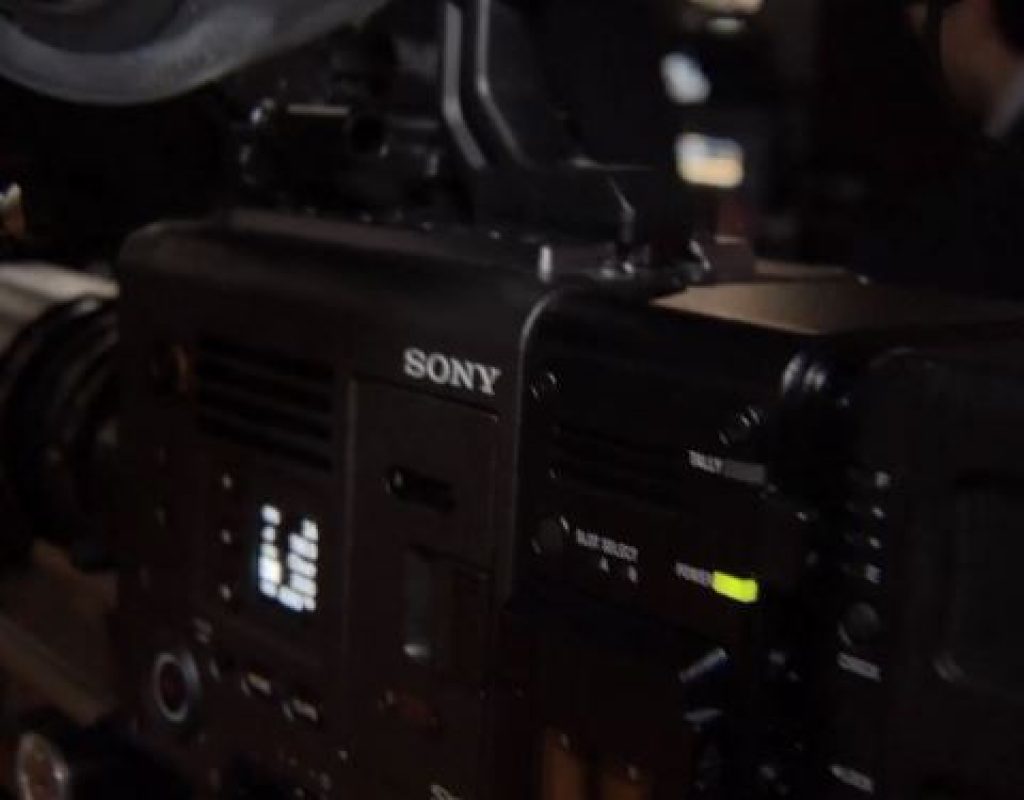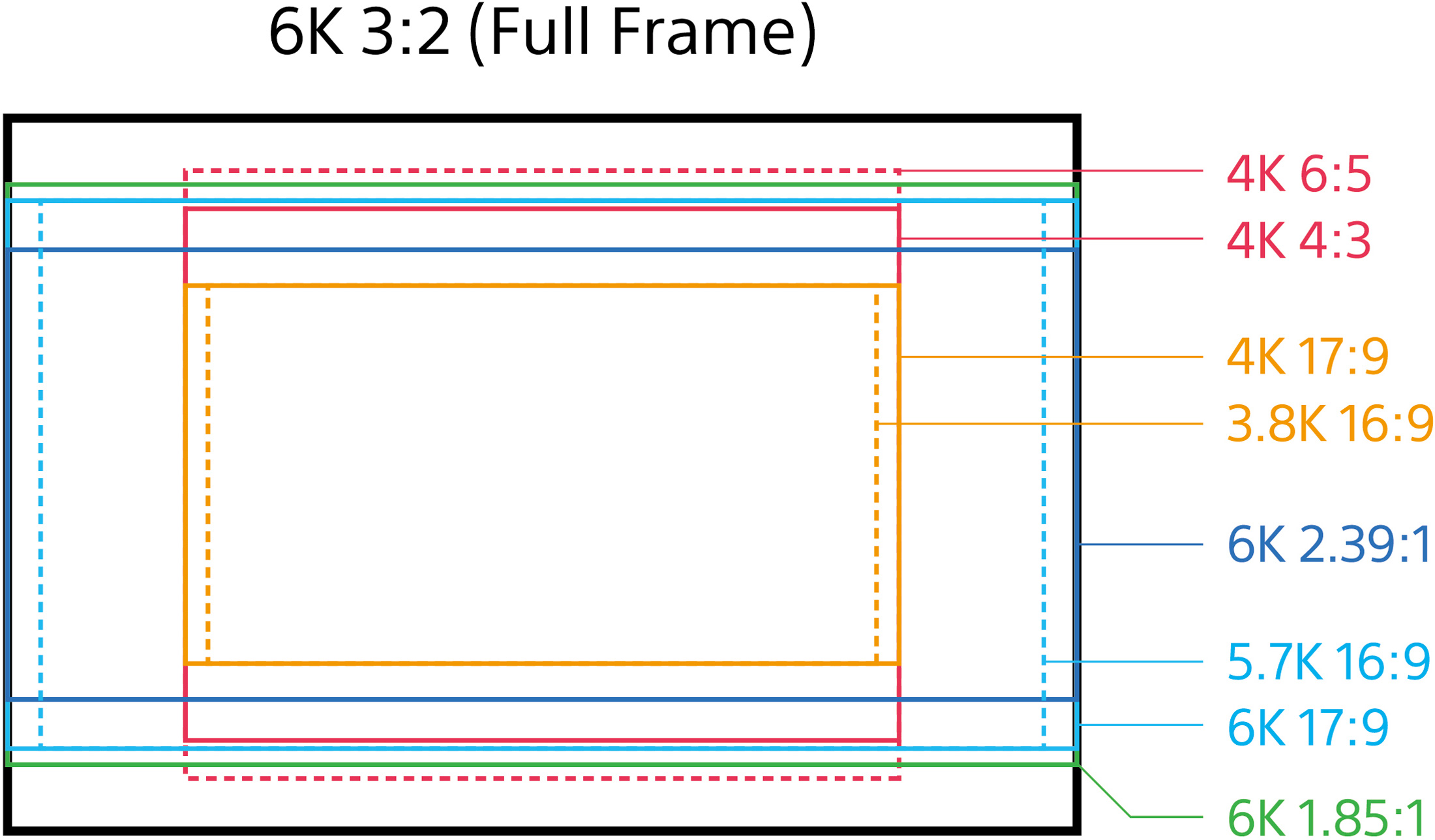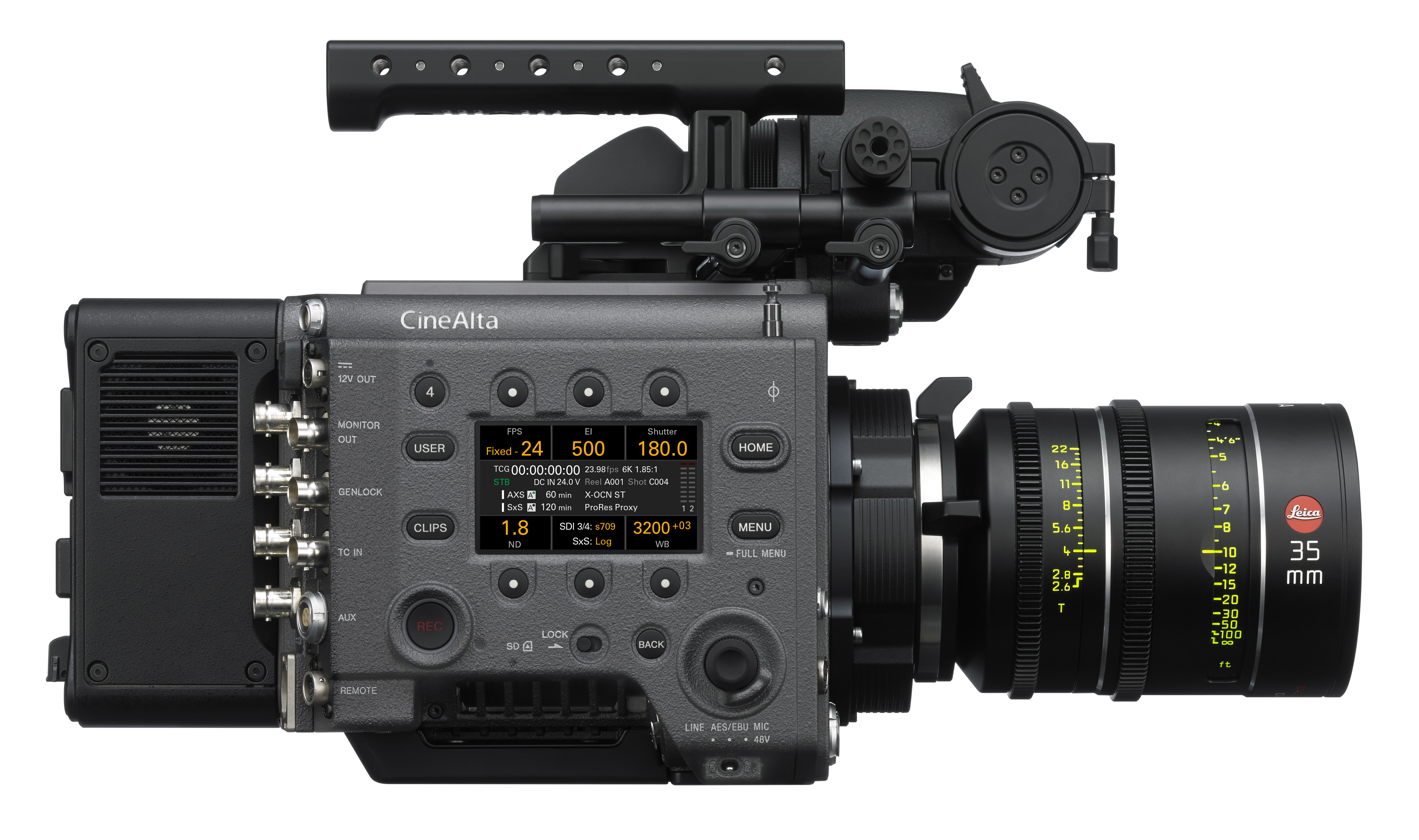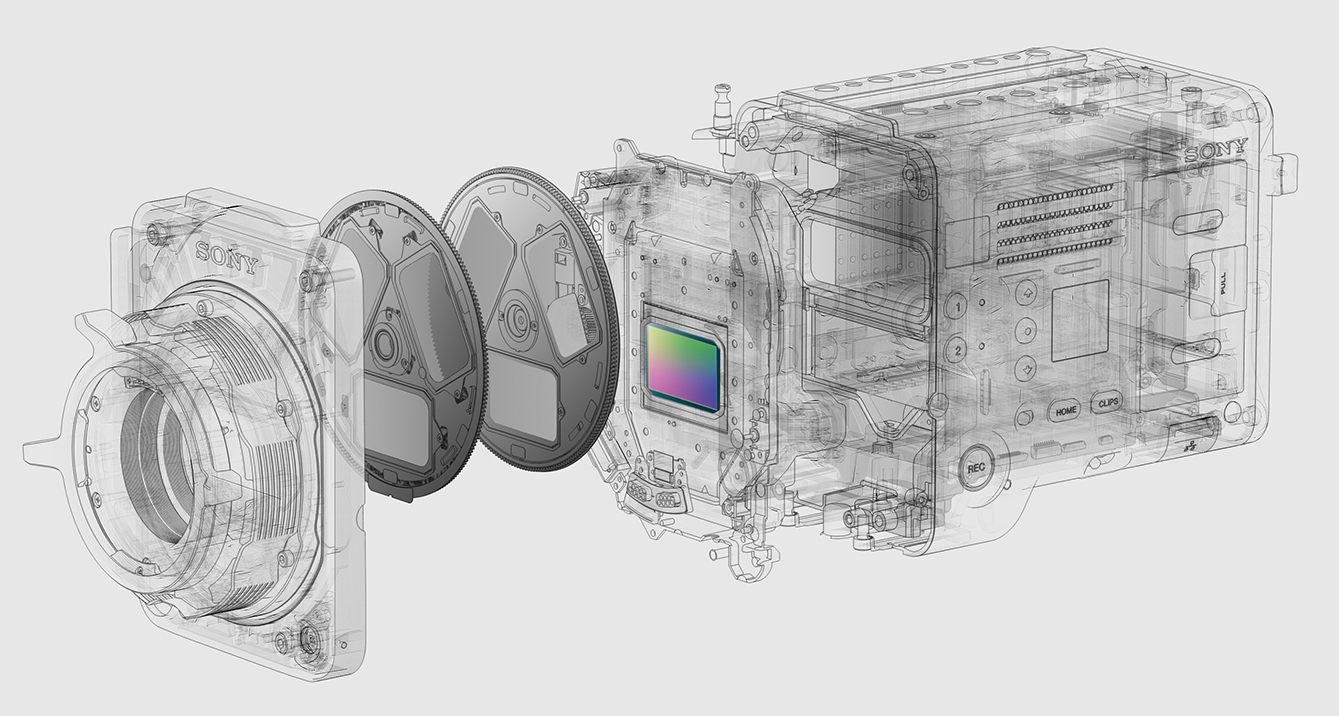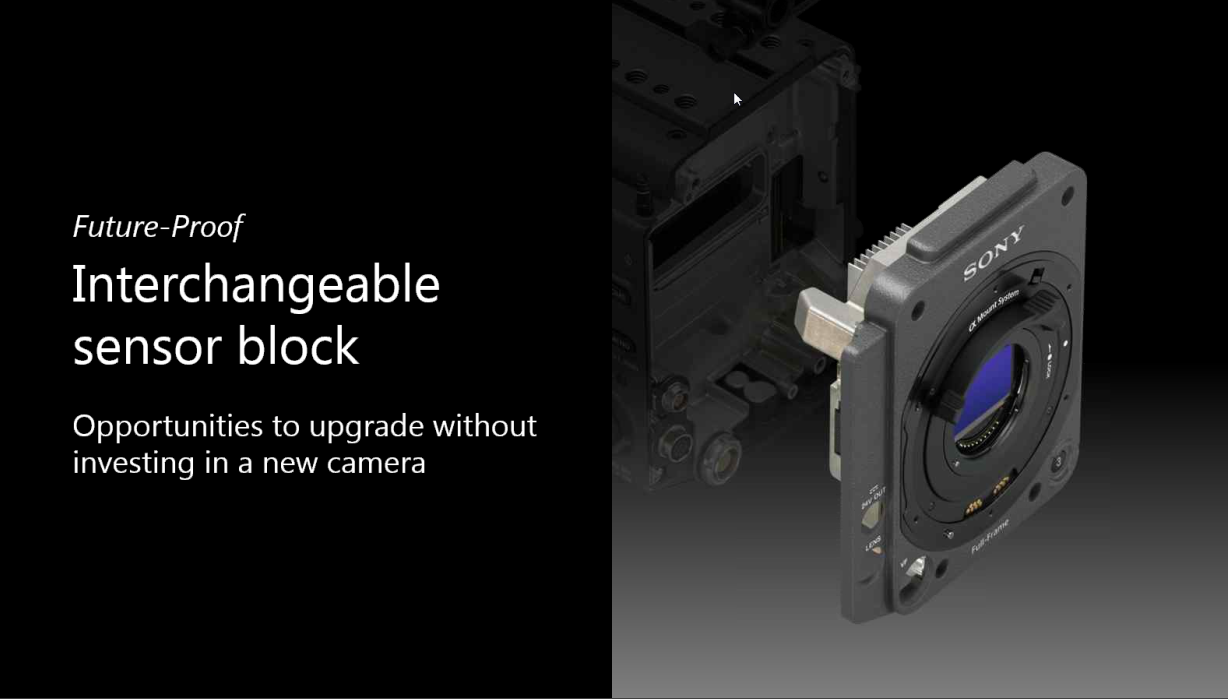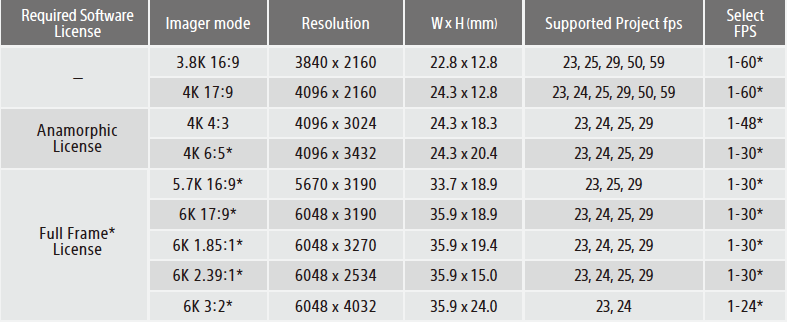At NAB 2018 I got an opportunity to talk to Sony about the Sony VENICE. The day before I, like many NAB attendees took a deep look at the camera to see what the image is like and what to expect out of Sony’s new Flagship camera.
The Full-Frame Sensor and Wide-Range of Lens Options
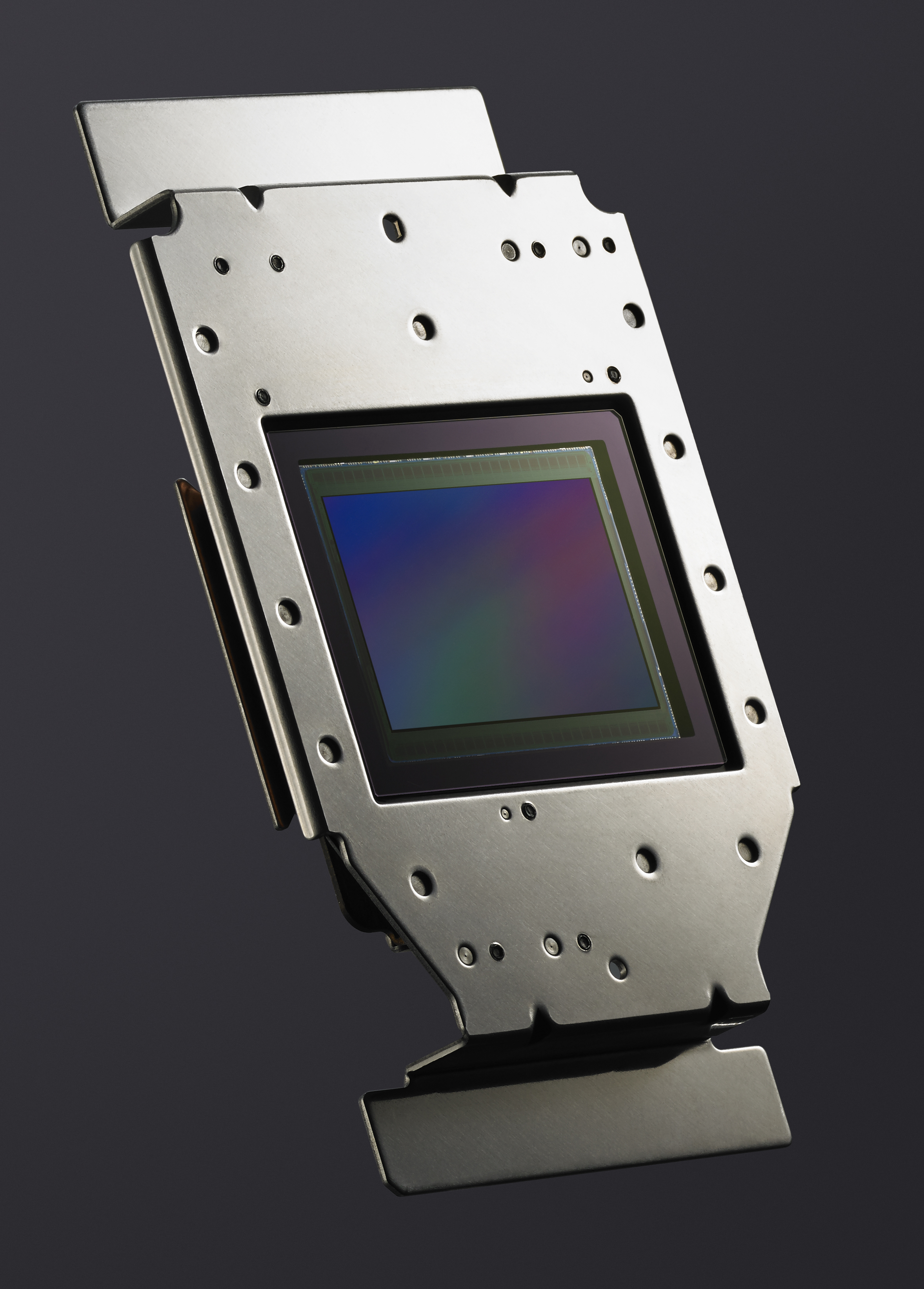 VENICE comes with a newly developed 36x24mm Full Frame sensor to meet the ever-growing sensor size camera market. What’s great about this sensor though is its flexibility. The 36x24mm Full Frame is just one way, or size the sensor can shoot. The new Full Frame sensor offers several different frames recording sizes with user-selectable areas: Full-frame full-width 36mm at 6K (a future firmware upgrade), Super35 full height 2.0x squeeze Anamorphic, Super35 mm 4- perf, and Super35 17:9 and 16: 9. This gives the VENICE a huge advantage on compatibility with a wide range of lenses, including Anamorphic, Super 35mm, Spherical and Full Frame PL mount lenses for a greater range of expressive freedom. The lens mount can also be changed to support E-mount lenses for shooting situations that require smaller, lighter, and wider lenses. Fast image scan technology minimizes “Jello” effects.
VENICE comes with a newly developed 36x24mm Full Frame sensor to meet the ever-growing sensor size camera market. What’s great about this sensor though is its flexibility. The 36x24mm Full Frame is just one way, or size the sensor can shoot. The new Full Frame sensor offers several different frames recording sizes with user-selectable areas: Full-frame full-width 36mm at 6K (a future firmware upgrade), Super35 full height 2.0x squeeze Anamorphic, Super35 mm 4- perf, and Super35 17:9 and 16: 9. This gives the VENICE a huge advantage on compatibility with a wide range of lenses, including Anamorphic, Super 35mm, Spherical and Full Frame PL mount lenses for a greater range of expressive freedom. The lens mount can also be changed to support E-mount lenses for shooting situations that require smaller, lighter, and wider lenses. Fast image scan technology minimizes “Jello” effects.
A New Color Management System
A new color management system with an ultra wide color gamut gives users more control and greater flexibility to work with images during grading and post-production. VENICE also has more than 15 stops of latitude to handle challenging lighting situations from low-light to harsh sunlight with a gentle roll-off handling of highlights.
VENICE achieves high quality and efficient file-based production through Sony’s established 16-bit RAW/X-OCN via the AXS-R7 recorder, and 10-bit XAVC workflows. VENICE is also compatible with current and upcoming hardware accessories for CineAlta cameras (DVF-EL200 Full HD OLED Viewfinder, AXS-R7 recorder, AXS-CR1 and high-speed Thunderbolt-enabled AXS-AR1 card reader, using established AXS and SxS memory card formats.
Intuitive Design & Refined Functionality
VENICE has a fully modular and intuitive design with refined functionality to support simple and efficient on-location operation. It is the film industry’s first camera with a built-in 8-stage glass ND filter system, making the shooting process efficient and streamlining camera setup. The camera is designed for easy operation with an intuitive control panel placed on the Assistant and Operator sides of the camera. A 24 V power supply input/output and LEMO connector allow the use of many standard camera accessories, designed for use in harsh environments.
8 Step ND Filter System
The VENICE has two servo-controlled, mechanized optical ND filter wheels to reduce exposure up to 8 stops. The neutral density goes from clear to ND 0.3 to ND2.4. The ND filter options are ND.3, ND.6, ND.9, ND1.2, ND1.5, ND1.8, ND2.1, ND2.4. Also, this 8 Step ND filter system will be able to be controlled wirelessly. If you’re lucky enough to have the VENICE on a crane, jib, or a drone you will be able to change the ND without having direct access to the camera. This is a pretty big plus for those edge of the day shoots where a DOP might be swapping out ND to keep up with the ever-changing light.
VENICE Recording
The VENICE supports in-camera XAVC or ProRes HD recording onto SxS cards. If a cinematographer decides to attach an AXS-R7 recorder with 4 screws then the recording options become more desirable. The bolt on AXS-R7 recorder will allow a director of photography to record 16-bit linear RAW in 4K or the AXS-R7 recorder will allow a shooter to record X-OCN 6K 16-bit with significantly smaller file sizes onto AXS cards.
Dual Recording
The VENICE can also record two video streams at once onto two different media formats. The AXS-R7 digital recorder can be set to record the Raw or X-OCN as XAVC or ProRes proxies are recorded onto internal SxS cards. In a future firmware update, the VENICE will record raw or X-OCN onto the AXS-R7 while the VENICE also records 4K XAVC internally as its proxy setting. What if a shooter does not have the AXS-R7 handy? Well, there is an option to record both XAVC 4K and ProRes 422 Proxy onto an SxS card at the same time.
Future Proofing
The VENICE also has the option to replace the Sensor Block when new and improved Sony sensors become available. While this technology in digital cinema cameras is not new it is new to a Sony Camera. Sony also takes the idea a little bit further. The VENICE Sensor Block is a user-changeable Sensor Block that can be changed out in the field without a need for a clean room. Cinematographers can forget about sending their camera back to the manufacturer for costly upgrades. The key to the field changeable sensor is because Sony has made the whole front of the camera removable. Only four hex screws hold the Sensor Block and its necessary components onto the camera body.
License Options
With VENICE, Sony is giving users the option to customize their camera by enabling the features needed, matched to their individual production requirements. Optional licenses will be available in permanent, monthly and weekly durations to expand the camera’s capabilities with new features including 4K anamorphic and Full Frame, each sold separately. The VENICE CineAlta digital motion picture camera system is scheduled to be available in February 2018.
Lens Mount
At the time of the announcement, the VENICE has two lens mount options: a PL option and a locking E-Mount option. Interestingly enough, the PL mount sits on top of the locking E-Mount meaning just about any mount, or adapter can sit on top of the locking E-Mount. This means the VENICE works with existing PL Lenses, will accept Panavision mounts and will likely accept almost any mount that comes in Super35, Full-frame, or large formats. The PL mount is attached directly to the existing E-Mount by six screws on the front. How does this all work? The flange depth for an E-mount is a measly 18mm whereas the flange depth for a PL mount is 58mm. The PL mount comes with industry-standard lens metadata contacts for Cooke/i at 12 o’clock.
VENICE Dual-Base ISO
Originally Sony announced the VENICE with a base ISO of 500. For the cinematographer, this might have been a nice request but for indie shooters or documentary shooters, the base ISO of 500 was a little too low for their needs. Thankfully, Sony listened to and has now added a dual ISO function to the Sony VENICE. Now, the camera has 500 and 2500 has base ISO options. At NAB 2018, I had a chance to look at the ISO sensitivity with the camera and I think it is not much to be worried about. At 500 and 2500 the image was beautiful and clean. At 8000 ISO there was noise in the blacks which I think can be cleaned out with noise reduction like the one found in DaVinci Resolve.
Sony’s VENICE
- Full Frame Sensor 24×36 mm
- 6K Full Frame 6048 x 4032 maximum resolution
- 4K Super35 window
- Widescreen spherical 2.39:1 or Large Format ‘Scope
- Super35 full height 2.0x squeeze Anamorphic
- 8-Step, 8-Stop Internal NDs
- PL and Ruggedized E-mount
- Spherical FF & S35
- Anamorphic FF & S35
- 15+ Stops of Exposure Latitude
- Retains highlights and color detail 6 stops overexposed and 9 stops into the shadows

Filmtools
Filmmakers go-to destination for pre-production, production & post production equipment!
Shop Now